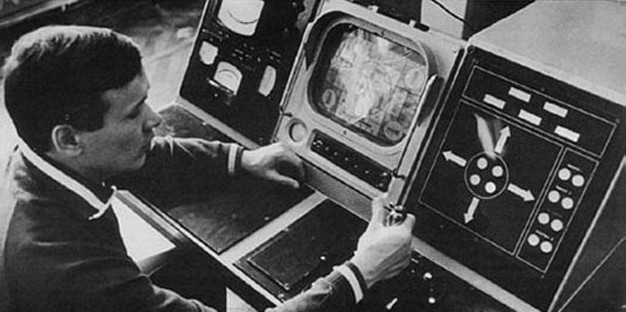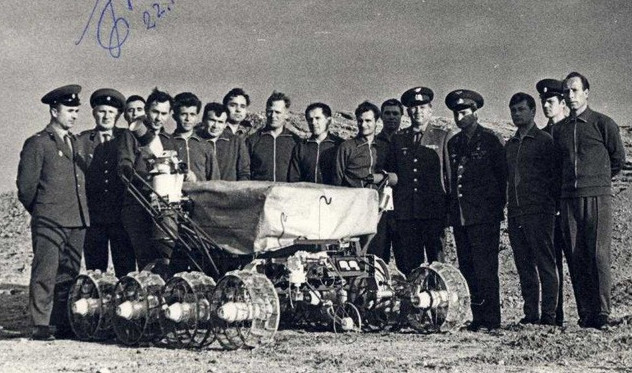On November 10, 1970, the Soviet Union’s Luna 17 spacecraft brought a Lunokhod-1 self-propelled vehicle to the lunar surface. 11 months later, under the control of a group of technicians in Moscow, Lunokhod-1 discovered 12 km above the surface of the Moon, returning a lot of data to Earth. This is considered one of the greatest successes of the Soviet moon expedition program. However, after that, Lunokhod-1 disappears and no information is returned.
Nov. 10, 1970 – Self-propelled vehicle launched to explore the moon Lunokhod-1
NASA attempted to locate Lunokhod-1. It was not until early 2010 that the exact coordinates were determined. Surprisingly, this pedestrian picked up a signal from NASA and sent the response signal clearly and sharply to the observatory. After Lunokhod-1 was sent to the Moon, Lunokhod-2 followed suit in 1973. This second probe still regularly sends data for research on Earth. Compared to the juniors, Lunokhod-1 sent more powerful signals.
“The best signal we have received from Lunokhod-2 in our 7 years of operation is 750 photons but we received 2,000 photons from Lunokhod-1 after reconnecting with this probe. It seems that Lunokhod-1 has a lot to say after 40 years of silence, ”said Tom Murphy, principal investigator. The case of Lunokhod 1 will be studied by NASA to increase the efficiency of the probes. Normally, the probes weaken after about 10 years of being sent to the moon.
During the “cold war”, space missions were prepared in top secret. The Lunokhod project is the same. No one guessed that behind the high fence around the proving grounds on the Krym Peninsula, the self-propelled car was practicing overcoming obstacles. No one knows of the trials on the Kamchatka Peninsula, where the landscape is very similar to the surface of the Moon. The departure date is also kept secret. The official release only concerns the launch of the “Luna-17” space station.

And it was only after the station “Luna-17” landed safely in the region of the rainy sea on the Moon and the self-propelled vehicle weighing 840 kg was detached from the station, that the world entire learned of the existence of Lunokhod. Here is the statement of Vikenty Samal, a technician who drove the Lunokhod-1: “According to the plan, the self-propelled vehicles were to measure the topography and study the geological morphology on the Moon. With this device analyzed the composition of soil and rock samples and radioactivity on the surface of the Moon, studied cosmic rays and carried out a positioning experiment on the Moon with laser equipment.
The team of motor vehicle operators comprises 5 people. They watched the lunar landscape on the television screen. This activity is unusual. It took 2.5 seconds for the order to travel to the Moon and return to the surface.
 The driver of the autonomous vehicle monitors the lunar landscape on the TV screen.
The driver of the autonomous vehicle monitors the lunar landscape on the TV screen.
The steering wheel guided the car to self-propelling for 322 days, after which communication was cut off and attempts to reestablish communication were unsuccessful. During this time, Lunokhod-1 traveled 10.5 km, returned 20,000 televised photos to Earth, and performed 500 tests of rock and soil samples from the Moon. In 1973, the Lunokhod-2 self-propelled vehicle succeeded in this mission.
During its four months of work on the Earth satellite, the Lunokhod-2 traveled 37 km above the lunar surface, returning a total of about 80,000 televised images to Earth. The main mystery of Lunokhod vehicles is decoded after decades. Self-propelled vehicles were designed to support expeditions to conquer the moon. “There was a plan in the past: the manned spacecraft landed on the moon and next to it, the reserve ship’s landing site,” Vikenty Samal continued. If there is a problem, the astronaut can use the self-propelled car to transfer to another ship.

However, in the 1970s, Soviet leaders ordered to focus research on Mars to abolish the lunar study program with space stations, and the Lunokhod-3 was supposed to fly to the moon during the year. 1977 remained on the ground. There is a good chance that the third self-propelled vehicle will be dedicated to transporting astronauts to the Moon.


